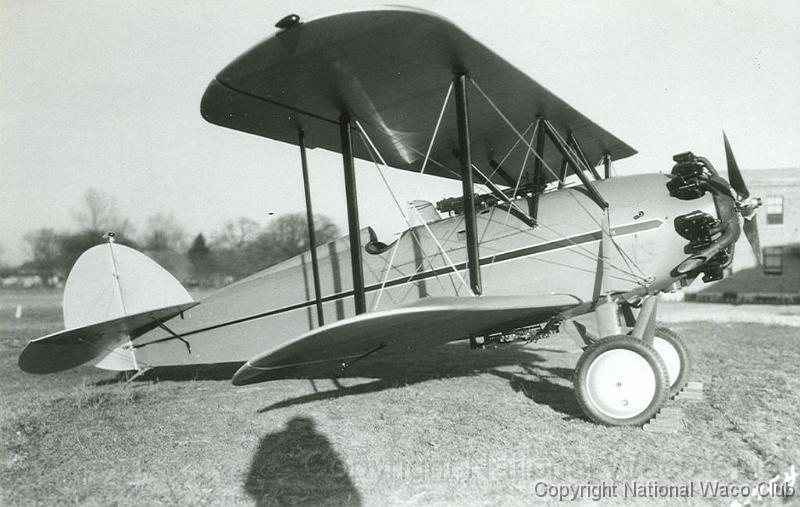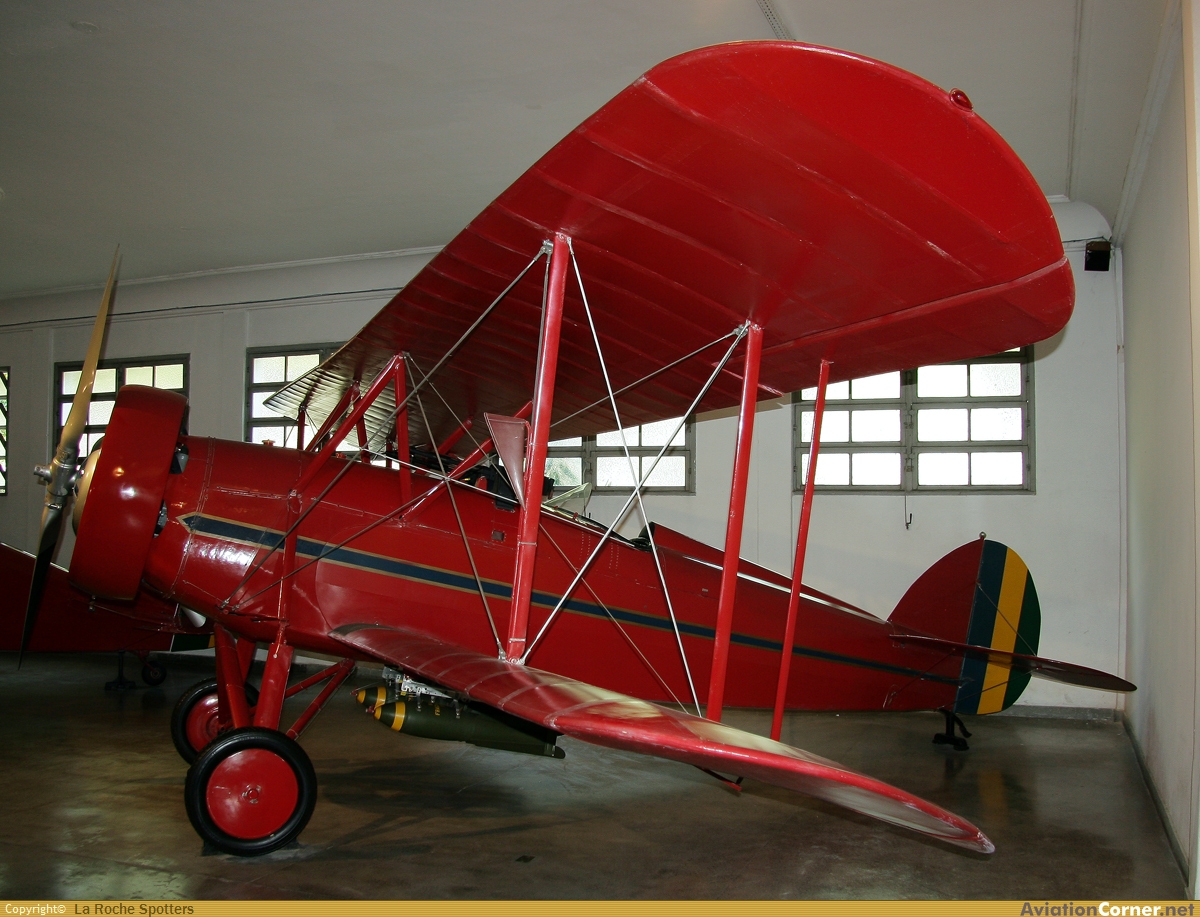Talking about Waco planes is talking about an stunning series of biplane designs that were common place in the inter-war years. Perhaps better known for their CG-4 assault glider of WWII fame, the Waco factory produced some of the most aesthetically pleasing airplanes during the 30s, with many still flying today in the vintage aviation circuit. A Waco UPF-7 in service with the Guatemalan Air Force was reputedly, till a few years ago, the oldest biplane serving the military. Today it rests in a semi-derelict state at the La Aurora airport.
The first big success for the Waco company was their series 10 biplanes, which in 1928 would change its designation to the O series. Of particular note was the company's naming conventions: last letter of the designation was for the general design, the middle one for the specific model within that series and the first one for the engined used. So, the CSO model described here is an "O" series airframe fitted with open cockpits for the pilot at the rear cockpit and two passengers on the front seat, "S" stands for Straight edge wing (there was a T version with tapered wings) and "C" that it was driven by a seven cylinder, 225 h.p. radial Wright Whirlwind J6-7 engine. In Argentina it has become a sort of "forgotten airplane", despite its involvement in one of the greatest air raids here. In December, 1931, civilian pilot Rufino Luro Cambaceres and his copilot Francisco Ragadale took their CSO from Comodoro Rivadavia to Río Grande and then Ushuaia, making them the first argentine aircrew to actually fly from the mainland to that National Territory. Before them, Günther Plüschow with his Heinkel HD-42 "Tsingtau" had made some flights over the island, departing from Chile.
Ubiquitous as it was, with a good maneuverability, rugged hidraulic landing gear and solid airframe, the O series was developed into a military aircraft by Waco, named the -240. Fitted with a slightly more powerful Continental W-670 radial engine giving 240 h.p., hence its designation, it had two Colt-Browning MG40, 30 cal. machine guns fitted over what once was the front cockpit and two A-3 bomb carriers under the fuselage. Though it didn't raise too much interest, the chinese and brazilian air forces bought them as stop gap fighters while modernizing their material. The chinese machines fought in the several internal uprisings of the civil war, until they were whiped out of the sky during the japanese invasion in 1937.
Despite beint tagged in the picture as a brazilian machine, this particular -240 has been painted in a scheme of light blue fuselage and silver flying surfaces with black struts, typical of chinese machines. This shot shows to good advantage the position of the bomb carriers under the fuselage and the machine guns over the coaming, a la W.W.I style.
Brazilian machines were to have an equally moved life as it would be seen. When in July of 1932 the unrest caused in Sao Paulo by the murder of four students the previous May during civil protests due to the inconstitutional ruling of Getulio Vargas (who came to power through a coup d'etat in 1930), galvanized in a state of civil and military uprising to depose him, and allow the democraticaly elected President of Brazil, Sao Paulo's Governor Julio Prestes, to inaugurate his administration, the Wacos were in the first line of combat from day one. In the Constitutionalist Revolution the CSO and -240 served in both fields depending on what airfield they were. Defections were commonplace. While the CSO used by the Aeronautica Militar for mail transport turned into a liaison aircraft, the -240s were used for bombing runs and aerial combat.
Flying alongside the three Nieuport 72 fighters available and a handful of Curtiss Falcon light bombers, their pilots soon found the MG40 machine guns to have synchronization problems, so they were taken off the biplanes and only light bombing / spotting duties were assumed. The war lasted beetween July 9th and October 2nd, 1932, when the revolt was crushed by governement forces. While the official death toll raised to 934 killed, non official numbers raise as much as 3.250 killed, with many cities having sustained serious damages. Vargas was to retain the power, but several of the democratic requests made by the revolutionary forces were finaly granted.
That was not to be the end of the career for the tiny biplanes, they would go on to provide sterling service for the Aeronautica Militar and later the Força Aerea Brasileira until 1946, joined by their naval brothers, the float equipped CSOs of the Marinha de Guerra and later, more capable Waco models, like the CJC cabin biplane and the CPF-5 trainer/mail carrier.
The oldest serving brazilian Waco last flew in 1962-63 as a target tug for the CTA, the Technical Aeronautical Center. It was given a tailwheel and an enlarged rudder to counter the drag from the target chute.
Today, a CSO takes its place in the amazing TAM collection of aviation, while a -240 model rests in the Museu Aerospacial in Rio de Janeiro, with full armament and resplendent in its deep red paint, which gave way to their nickname, "Vermelhinhos" (portuguese for Little Red Ones).
The TAM machine, which was subject to a careful restoration process before entering the museum's collection.
And the "Vermelhinho" in the Museu Aerospacial, looking ready for a sortie like so many years ago.
In our next installment, we'll see how the brazilian cottage industry fared against my ham-fisted modeling skills when I built the Commando 5 issue of this more than classical and unfairly forgotten biplane.
Till then, take and good luck.
The Modeling Underdog






Comments
Un saludo